Behind every thriving garden is a gardener equipped with the right tools. Whether you’re growing vegetables, tending to flowers, or landscaping your backyard, having the proper gardening tools makes the process more efficient, enjoyable, and successful. Tools are not just about convenience; they also help protect your body from unnecessary strain and give your plants the best care possible.
In this guide, we’ll explore the essential gardening tools every gardener should own, explain their uses, and provide tips on choosing and maintaining them. From simple hand tools to specialized equipment, these are the must-haves that form the foundation of any well-kept garden.
Why Gardening Tools Matter
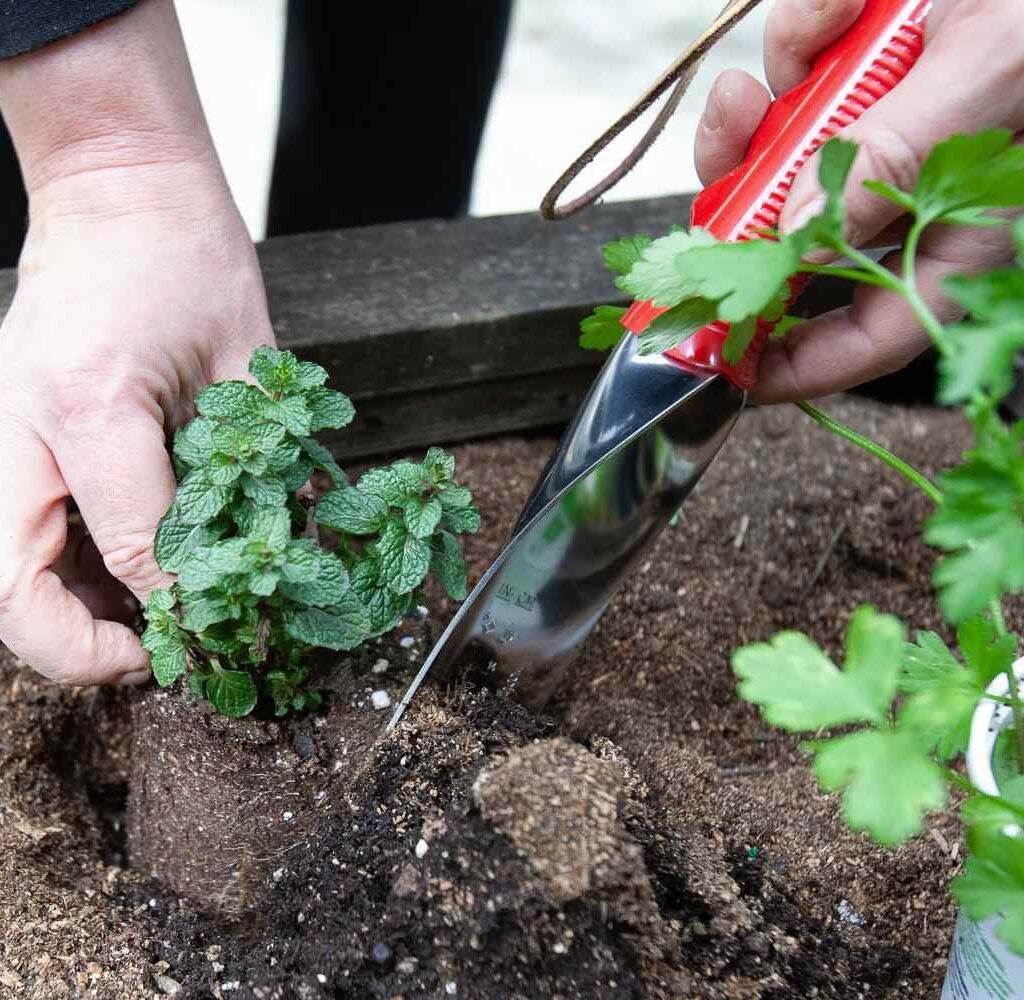
Some might think gardening requires little more than soil, seeds, and water. However, quality tools make a huge difference by:
- Saving Time and Effort – The right tool can cut work in half.
- Improving Precision – Tools help with accurate planting, pruning, and shaping.
- Reducing Strain – Ergonomic tools prevent injury to your back, knees, and hands.
- Boosting Plant Health – Proper pruning, digging, and watering techniques promote growth.
- Enhancing Enjoyment – Gardening becomes more fun and less frustrating with efficient tools.
Now let’s dive into the must-have tools every gardener should keep in their shed or toolbox.
1. Hand Trowel
A hand trowel is the most basic and indispensable gardening tool. It’s perfect for digging small holes, transplanting seedlings, and loosening soil in flower beds or pots.
- Best Use: Planting bulbs, removing weeds, mixing soil.
- Tips for Choosing: Look for a sturdy, rust-resistant metal blade with a comfortable, ergonomic handle. Stainless steel blades last longer than aluminum ones.
2. Pruning Shears (Secateurs)
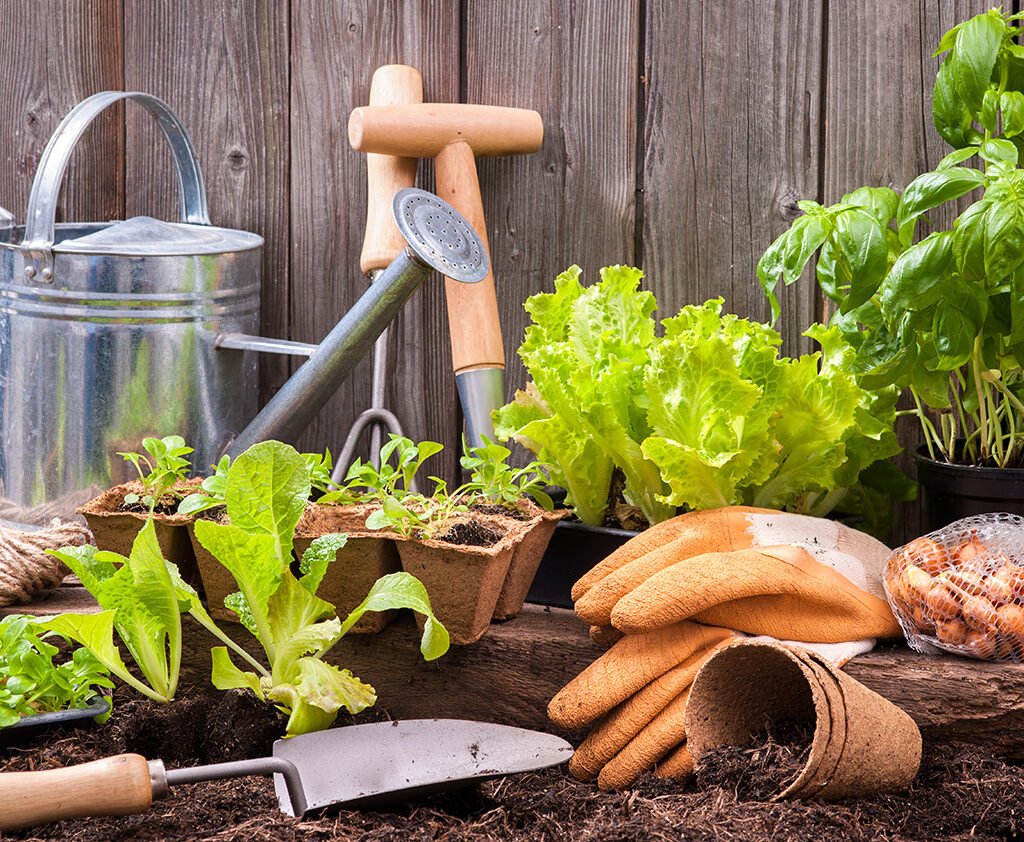
Pruning shears are essential for cutting stems, deadheading flowers, and shaping plants. A good pair ensures clean cuts without damaging plant tissue.
- Best Use: Trimming branches up to ¾ inch thick, harvesting herbs, or cutting flowers.
- Tips for Choosing: Bypass pruners are ideal for live plants, while anvil pruners work better for deadwood. Select shears with cushioned grips for comfort.
3. Gardening Gloves
Gardening without gloves can lead to blisters, scratches, and exposure to thorns or harmful chemicals. A good pair of gloves protects your hands while offering flexibility.
- Best Use: Digging, pruning roses, handling soil, or spreading mulch.
- Tips for Choosing: Go for durable, water-resistant gloves with breathable fabric. Leather gloves are excellent for heavy-duty work.
4. Garden Fork
A garden fork (or digging fork) is a versatile tool for loosening soil, turning compost, and breaking up clumps. Unlike shovels, forks penetrate compacted soil more easily.
- Best Use: Aerating soil, digging up root vegetables, and moving mulch or compost.
- Tips for Choosing: Look for strong, stainless-steel tines that won’t bend in tough soil.
5. Spade
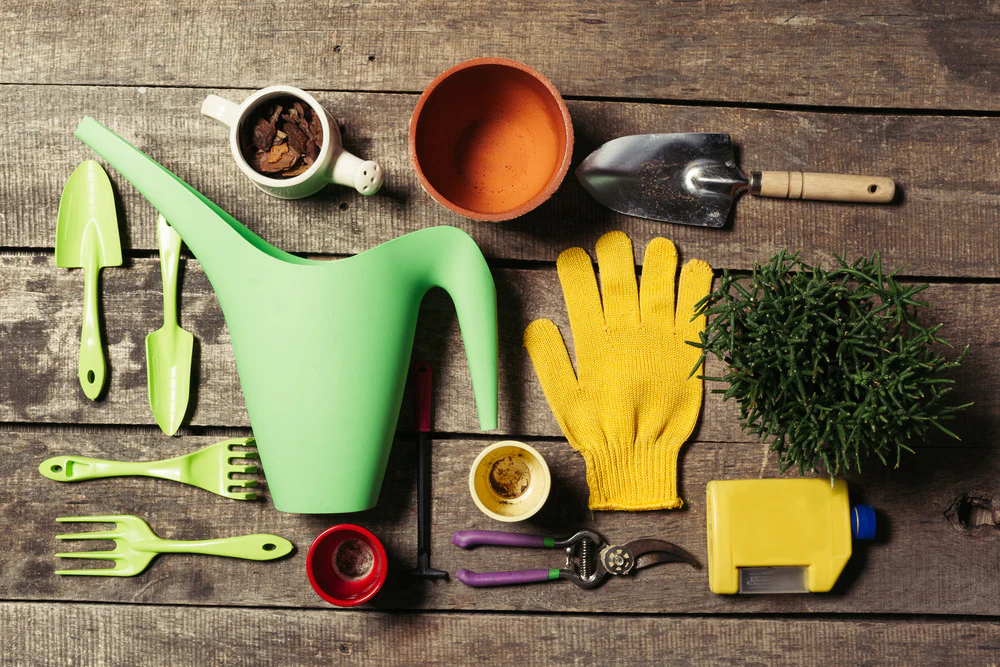
A spade is different from a shovel—it has a flat, sharp blade designed for edging, cutting sod, and digging precise holes.
- Best Use: Defining garden bed edges, digging trenches, and transplanting shrubs.
- Tips for Choosing: A long-handled spade provides leverage, while shorter handles give more control.
6. Watering Can or Garden Hose
Water is life for your plants, and how you deliver it matters. A sturdy watering can is essential for potted plants and delicate seedlings, while a garden hose with a spray nozzle is ideal for larger beds.
- Best Use: Watering indoor plants, outdoor containers, or expansive beds.
- Tips for Choosing: Select a lightweight can with a detachable spout for versatility. For hoses, opt for kink-resistant models with adjustable nozzles.
7. Wheelbarrow
Moving heavy loads of soil, compost, or stones is nearly impossible without a wheelbarrow. It’s a back-saving tool for large-scale gardening projects.
- Best Use: Transporting soil, plants, mulch, or garden debris.
- Tips for Choosing: Look for a sturdy steel tray and a wheel with good balance. Two-wheel models provide more stability than single-wheel ones.
8. Hoe
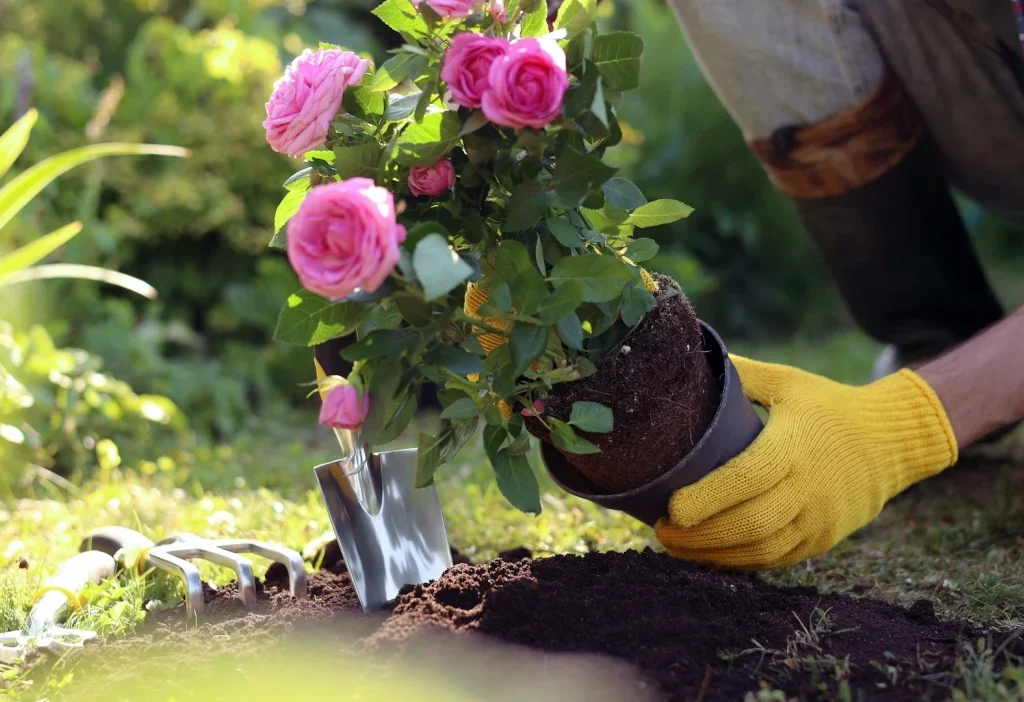
A hoe is indispensable for preparing soil and controlling weeds. It cuts into the soil surface, preventing weed growth and loosening compacted ground.
- Best Use: Weeding between rows, shaping beds, and mixing soil amendments.
- Tips for Choosing: A stirrup hoe is excellent for weeding, while a flat hoe is better for breaking soil.
9. Rake
Gardening requires two main types of rakes:
- Leaf Rake – Lightweight, with flexible tines for gathering leaves.
- Garden Rake – Heavy-duty, with rigid tines for leveling soil and removing rocks.
- Best Use: Cleaning up debris, smoothing soil, and spreading mulch.
- Tips for Choosing: Choose a rake with strong metal tines for soil work and a wide plastic or bamboo rake for leaves.
10. Garden Knife (Hori-Hori)
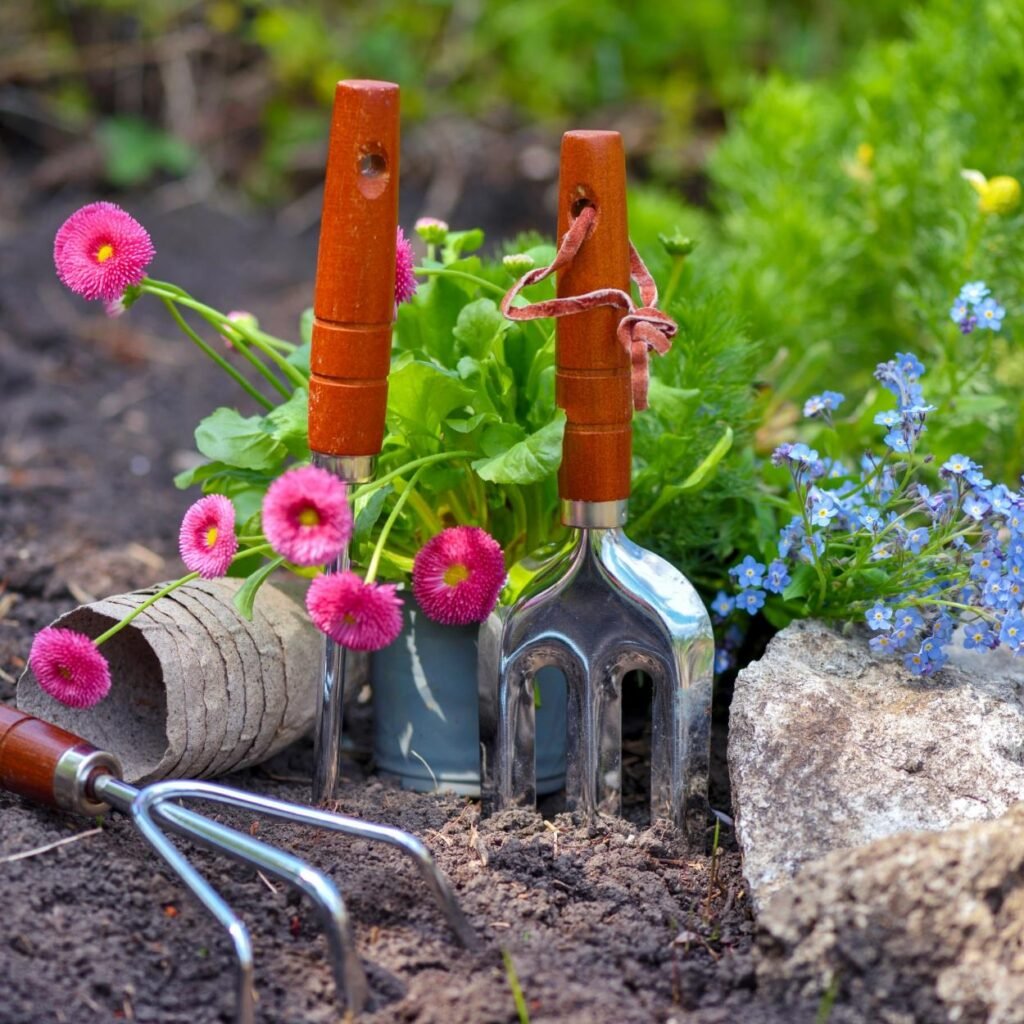
The Japanese Hori-Hori knife is a multipurpose tool that works as a trowel, weeder, and saw. It’s a favorite among serious gardeners.
- Best Use: Digging, cutting roots, dividing perennials, and transplanting.
- Tips for Choosing: Go for a stainless-steel blade with depth markings for accurate planting.
11. Pruning Saw
For branches too thick for pruning shears, a pruning saw is essential. Its serrated blade makes cutting woody stems and small tree branches easy.
- Best Use: Pruning trees, cutting thick shrubs, and shaping hedges.
- Tips for Choosing: Foldable saws are convenient and safe to store.
12. Garden Kneeler or Pad
Gardening often involves hours on your knees, which can strain joints. A kneeler or cushioned pad makes planting and weeding more comfortable.
- Best Use: Prolonged weeding, planting, or harvesting at ground level.
- Tips for Choosing: Select a thick, waterproof pad or a kneeler with side handles for support.
13. Garden Scissors
Garden scissors may seem simple, but they’re invaluable for snipping herbs, deadheading flowers, and opening seed packets or bags of soil.
- Best Use: Light trimming, harvesting, and general garden tasks.
- Tips for Choosing: Stainless-steel blades with comfortable handles are best.
14. Soil Testing Kit
Healthy soil is the foundation of every garden. A soil testing kit allows you to measure pH levels and nutrient content, ensuring your plants get the right balance.
- Best Use: Testing garden beds before planting, diagnosing nutrient deficiencies.
- Tips for Choosing: Opt for digital meters for quick results or chemical kits for detailed analysis.
15. Plant Markers and Twine
Organization is key in gardening. Plant markers help identify seedlings, while garden twine supports climbing plants and ties stems gently.
- Best Use: Labeling rows of vegetables, supporting vines, and organizing plant beds.
- Tips for Choosing: Weatherproof labels last longer, and biodegradable twine is eco-friendly.
Maintaining Your Gardening Tools
Even the best tools won’t last long without proper care. Follow these steps to extend their life:
- Clean After Use – Rinse soil and debris to prevent rust.
- Sharpen Blades – Keep pruners, knives, and shears sharp for clean cuts.
- Oil Metal Parts – Prevent rust by applying light machine oil after cleaning.
- Store Properly – Keep tools in a dry, covered place, preferably hung up to avoid damage.
- Inspect Regularly – Check handles for cracks and replace if needed.
Well-maintained tools perform better, keep your plants healthier, and save you money in the long run.
Conclusion
A gardener is only as effective as the tools they use. From the humble hand trowel to advanced soil testing kits, each tool has its role in creating a flourishing, low-stress garden. Investing in the best gardening tools ensures you work smarter, not harder, and enjoy the process as much as the results.
By equipping yourself with these essentials—and keeping them well-maintained—you’ll transform gardening from a chore into a rewarding experience. With the right tools in hand, your garden will not only look more beautiful but will also thrive season after season.
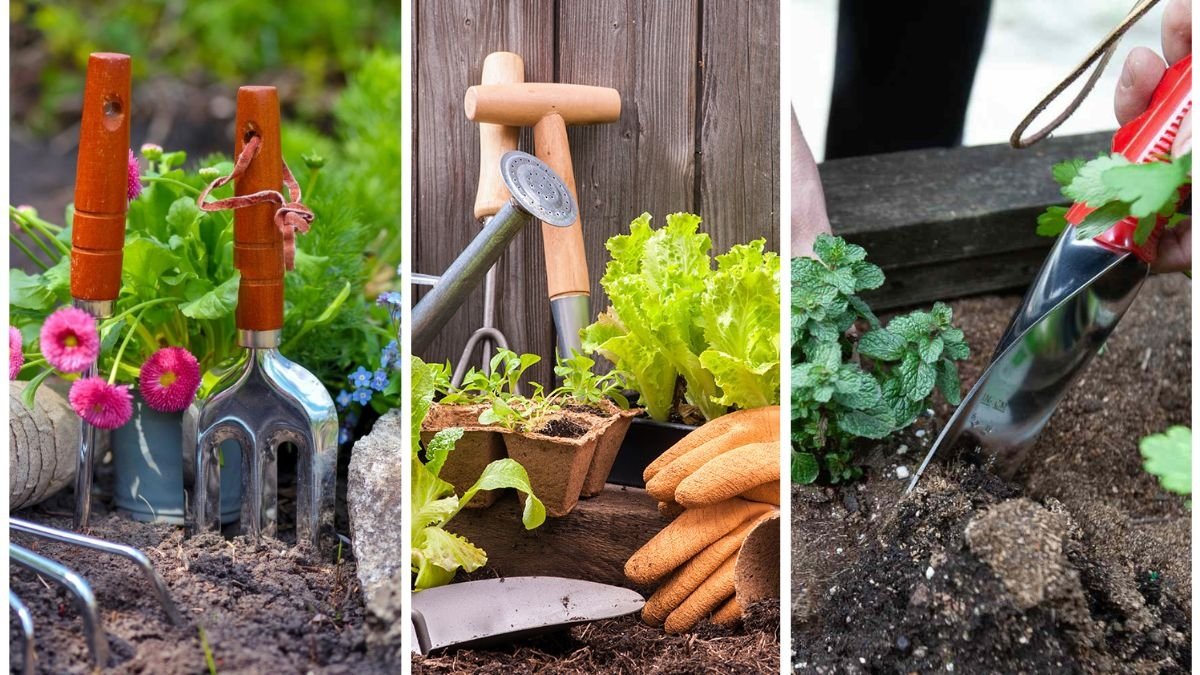
Leave A Comment